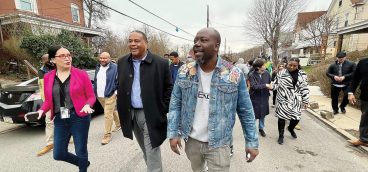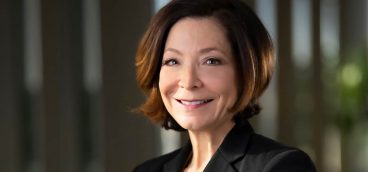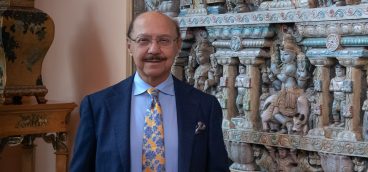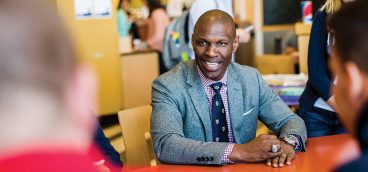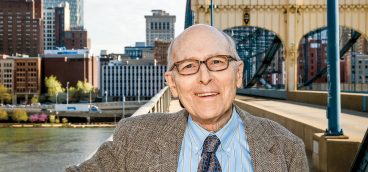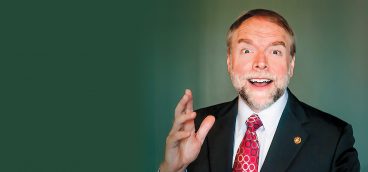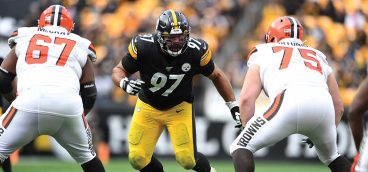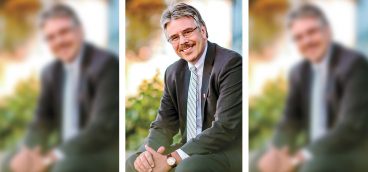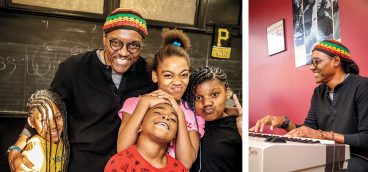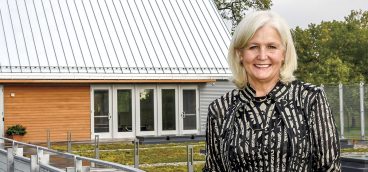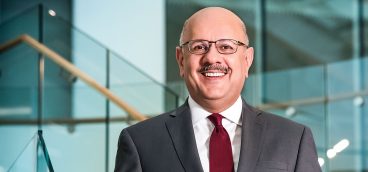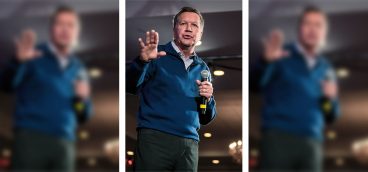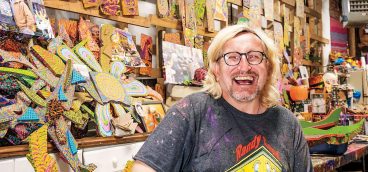What Do I Know? Dr. Robert M. Friedlander
A life’s recounting in the subject’s own words
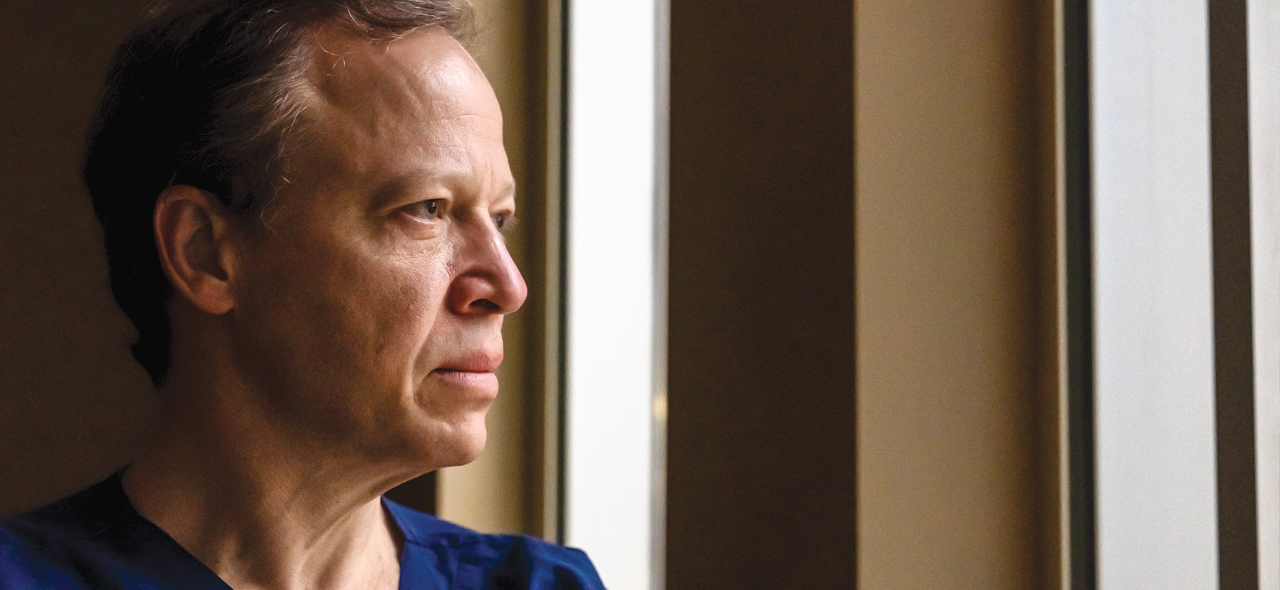
Dr. Robert M. Friedlander
December 14, 2022
“My mother’s father was born in 1905 in Pinsk, in the old Soviet Union. He was Jewish and had witnessed pogroms against his people, during which half of his family lost their lives. In fact, his father and some of his brothers were killed right in front of him. So, when he was 15, my grandfather escaped, with the equivalent of just $30 in his pocket, and went to Paris. There, he hopped a boat to Cuba.
Initially, my grandfather tried to enter the U.S. but was unable to do so because, at that point, immigration quotas prevented it. So, he went about establishing himself in Cuba, making a living doing odd jobs. Somehow, one of his younger brothers also made it to Cuba and the two were reunited. Nevertheless, my grandfather kept asking around: “Where’s a good place to go if I can’t go to America?” Someone said, “Go to Venezuela.” With that, he packed up his belongings and went and remained there.
My grandfather’s mother escaped Pinsk also and ended up in Brooklyn, N.Y. One day, he received news that she was ill and near death, so he went to visit her. But in truth, his mother wasn’t dying. She had picked out a wife for him and wanted to make a match. Eleven days later, my grandfather and the woman who would be my grandmother got married, settled in Maracay, the third largest city in Venezuela, and created a life for themselves.
My father’s mother was born in Austria. His father was born in Poland, and they emigrated in the early 1930s to what was called Palestine, and thereafter Israel, where my father was born. Many years later, after finishing his compulsory hitch in the army, my father went to visit his brother, who had met a Venezuelan Jewish girl when she was visiting Israel. Alas, my uncle ended up in Venezuela. My father visited him and, during their first few days there, the brothers attended a party, at which my father met my mother. She didn’t speak Hebrew, and he didn’t speak Spanish or English. But they fell in love, got married, and stayed on in Caracas, the largest city and capital of Venezuela, where, in 1965, I was born and grew up through high school.
My mother’s parents had three children: first, a son, and then my mother and her twin brother, all of whom went to school in the New York area. Her brothers — my uncles — ended up attending Dartmouth College in Hanover, N.H. and, eventually, became doctors in Boston. I’ve been told that, no more than 10 minutes after my birth, my mother proclaimed, “Robert is going to be a doctor, too.”
One time, on a visit to Caracas, my uncles brought with them a copy of Scientific American and I stumbled onto an article by an MIT professor, Robert Weinberg, about “oncogenes” and cancer. I remember thinking, “So, something happens in the human cell causing it to start dividing quickly and this results in a tumor.” But, thinking further about this, I figured there must be other genes and/or mechanisms that control when and how cells die. The balance between cell division and cell death must be key for a healthy balance. But there was no understanding of the regulation of cell death at that point.
I always loved science and, early on, I became more and more interested in cancer research. Although I lived in Venezuela, I wanted to come to America to study and do research. The U.S. was the best place to do that. So, I applied to a host of colleges and was rejected by all, except for Brandeis University, in Waltham, Mass. There, I was “wait-listed” and, by the time I was finally granted admission, there was no space in the class to begin in September. I had to wait until January. So, with a break of several months, I decided to go to Boston University to attend an English program for foreigners. Part of my problem with college admissions was the SATs. I did well in math, but my English scores were abysmal. And I knew that I had to do well in my undergraduate studies to stand a chance of getting into a good U.S. medical school.
My first test at Brandeis was in calculus and I got a “C+.” I made silly mistakes, and this did not bode well, considering my goal of reaching med school. But in retrospect, that test was a wake-up call. So, I studied a lot, worked hard and, somehow, ended up with an “A+” in that class. As a result, my confidence grew, which was a good thing because Brandeis offered a BA in biochemistry, which was the toughest of the science majors. On top of that, you could earn a BA and continue on to do a master’s thesis, which, obviously, would be more difficult. But no matter. I decided that, to improve my chances of getting into a good medical school in the U.S. and to perform advanced scientific research, I would do the master’s thesis as a way of demonstrating my abilities.
At the time, I remember meeting with my biochemistry adviser, Michael Rosbash. I told him that I was from Venezuela and had a hard time getting into an American college. As a result, I was six months behind, but intended to study hard to finish school in three-and-a-half years and, at the same time, go for the MA. He looked me in the eye and said, “Robert, you were wait-listed. You didn’t really get in. And as for the master’s program, don’t waste your time. You’re not going to be able to do it.” His dismissive attitude toward me made me want to show him that he was wrong. I did my research, worked hard and ended up graduating in three-and-a-half years, as planned — summa cum laude — with a combined bachelor’s and master’s degree. Interestingly, Rosbash was awarded the Nobel Prize in Medicine in 2017.
As an undergrad, I did a lot of research and fell in love with laboratory science. I worked in a lab with a young assistant professor named Michael Newman, who was dedicated to teaching me. From him, I learned that, as a researcher, doing experiments is only part of the equation. The more important part is learning, at the outset, to ask important and relevant questions and then to figure out how to answer them. Newman was a role model for me as I learned the nuances of being a successful scientist.
With an MA under my belt, I applied to medical school and, fortunately, got into Harvard. When I started there, I thought I was going to be a pediatric hematologist/oncologist, because I figured that it was a good field for getting into cancer research. But for my first two years of med school, as was the custom, I was not assigned to a hospital but, rather, to a classroom to learn physiology, anatomy, biochemistry, and so on — all the things that I would need to be successful in medicine. When my third year came around, I began my clinical rotations. I was still thinking about pediatric hematology/oncology, but my first rotation was in obstetrics/gynecology, and it was fun — delivering babies, and all that. Then I went on to radiology and, while I found it interesting, it wasn’t what I wanted to do. Next, came pediatrics.
In rotations, you are assigned a certain number of patients who you must follow through hospitalizations. Among my patients was a 12-year-old girl who had an immunodeficiency but not HIV. As it turned out, she had a condition called “pulmonary aspergillosis,” which means she had a fungus growing in her lungs. One morning, when I was rounding on her, all of a sudden, she started vomiting bright red blood and, unfortunately, she died. I was there with her mother and our team tried to resuscitate her, but to no avail. That experience was difficult emotionally, and very sad. As a result, I asked myself, “Is pediatrics really what I want to do?” I was shaken. So, now what? Do I do clinical medicine? Or do I do surgery?
The issue with surgery is that the training is very tough. Today, residents can work only 80 hours a week but, in my day, there was no limit. You could be on call every other night and, conceivably, could work 120 hours a week. Surgical training is also longer. Clinical medicine requires three years of training. And if you choose to specialize in gastroenterology or cardiology, you can add another two or three years to that. But training in neurosurgery takes seven years and I felt that this was too much to take on. Sure, I wanted to be a neurosurgeon, but I also wanted to do research as much, or more. Then one day, during my third year of medical school, I met Robert Martuza at Mass General and learned that he not only was a neurosurgeon but also had a successful, National Institutes of Health-funded lab. Here was living proof that merging surgery and science could be done.
When I did my general surgery rotation, I met Charlie McCabe, who recently had finished his training and was a bona fide cardiac surgeon. But early in his surgical career, he was diagnosed with multiple sclerosis, after which he never operated again. Dr. McCabe was an amazing person and a mentor, so I explained to him my dilemma. He said, “Robert, you could do dermatology and, if you don’t like it, you’ll wake up and be upset every single day. Training for that may be shorter and with better hours but, if you’re not happy doing it, what’s the point?” He went on to say, “However, if you’re willing to train a little harder for a little longer, you’ll be able to spend the next 30 years of your life doing what you love.”
Dr. McCabe’s prescription may have been simply common sense, but it led me to some soul-searching and to a realization that I should consider surgery more seriously. So, I did my surgical rotation and loved it. I found it wonderful to do something with my hands, and I was also solving problems. Neurosurgery is a complicated discipline and that’s why training for it is so hard and takes so long. Experience matters. Many surgeries take 2-4 hours, but some may take 10, 12 or even 24. So, in addition to brains and experience, you need stamina. I have found that, during long surgical procedures, it is possible to shut the world out. The only thing to care about is your patient and what you’re doing. I tell my trainees that neurosurgery is like climbing a mountain: You start at the base and you take a step up, and then another, and another. Then, once you reach the pinnacle, you’ll find a whole new mountain to climb.
During my residency at Massachusetts General Hospital, the first and largest hospital of Harvard Medical School, I enrolled in the “RUNN” course — an acronym for “Research Update of Neurosciences for Neurosurgeons.” Many neurosurgery residents from around the country would spend two weeks at the marine biological laboratories at Woods Hole Oceanographic Institution in Falmouth, Mass. There, in 1992, I attended a lecture by Robert Horvitz, a professor from MIT, who studied “C. elegans,” little roundworms that have been used as a model organism to study human health challenges ranging from Parkinson’s to mitochondrial diseases, as well as studying the human immune system. In his research, Dr. Horvitz learned how to pinpoint the time in the lives of the worms when each cell dies and was able to isolate the genes that regulated the process of cell death. From this, genetics in neuronal cell death, and cell death in general, became a new field of research.
When I heard that lecture, my heart started beating fast. This was what I was thinking while in high school — the other side of cancer. When some genes are not working properly, too many cells either die or don’t die. For example, in people with Huntington’s disease (a rare, inherited condition that causes the progressive degeneration of nerve cells in the brain and has a wide impact on a person’s functional abilities) or ALS (amyotrophic lateral sclerosis, a nervous system disease in which the nerve cells break down, leading to a reduction of functionality in the muscles they supply), their cells begin to die because certain processes get activated. At that moment, I said to myself, “For my two years of research during residency, I want to work with Robert Horvitz,” and so I approached him. He was performing high-impact research and many people were applying to his lab, most of whom were much more advanced than I was. I wasn’t accepted but he directed me to one of his students, Junying Yuan, who did a lot of the research that, in 2002, led to Dr. Horvitz receiving the Nobel Prize in Medicine.
Dr. Yuan was at Mass General and just starting her lab. But instead of working with worms, she worked with mice and mammalian cells. I applied to her lab and got in, and the work we did proved to be not only exciting but important, too. We did a number of studies and were able to develop a mouse that produced an inhibitor in the neurons of a cell death protein called “caspase-1.” With this mouse, we were the first to show that caspase is activated after a stroke and that, if you block it, the stroke would be less severe.
The year was 1995 and, at that point, a transgenic mouse model of ALS had been made. In Dr. Yuan’s lab, we crossed our mouse expressing the caspase-1 inhibitor with an ALS mouse and, when we did, the mouse that expressed the inhibitor of cell death lived longer than the mouse that didn’t. This was a “first,” and the study was published in Nature, a top scientific journal. So, I was a neurosurgeon who set out to study strokes and brain tumors and then, all of a sudden, I was an ALS researcher. I could have resisted and said, “I’m not going to work on ALS,” but I kept going. Think of it this way: You’re in a canoe on a river and can go with the flow or go upstream. If you go with the flow, you will go much further. So, I concluded that ALS research presented a great opportunity and I continued to work on it. I have been blessed to have many impactful mentors during my career, and Dr. Yuan is certainly at the top.
While still a resident, I was able to start my own laboratory and, between surgery and science, I was working 120 hours a week. I was able to do this, in part, because we had material research to do, and we also managed to raise money. First, I applied for a grant from the Muscular Dystrophy Association, and got it. At that point, I told my chairman, Nicholas Zervas, that I needed a little room where I could do my research and he gave me just that — a little room. It reminded me of a place where you store old boxes. In that room, we started our work on ALS and, eventually, got our study published. Soon, we were contacted by the Hereditary Disease Foundation, which studies Huntington’s disease. It was founded by Nancy Wexler, a psychologist at Columbia University, who asked Ethan Signer, one of the leaders of the foundation, to call me. He said, “We would like you to do for Huntington’s what you did for ALS.” Interestingly, a mouse model for Huntington’s disease had been made already and I told him that I had been thinking about that work and would love to do the research, but I didn’t have the funds. The foundation asked me to send in a proposal. I wrote one for $350,000 and got the money. We then started crossing the Huntington’s mouse with the mouse that we made with the inhibitor of cell death. Lo and behold, the mouse that had the inhibitor of cell death lived longer. It was the first time that anyone extended the life of a Huntington’s mouse, and Nature published that study.
The week after I finished my residency at Mass General, I got married to a wonderful woman, Eugenia (with whom I would later have three kids: Henry, graduating from Stanford; Alexandra, a rising sophomore at Harvard; and Eva, a promising eighth-grader at Shady Side Academy). My first faculty position was at the Brigham and Women’s Hospital/Harvard Medical School in Boston. There, I established a lab and, over the years, continued to do scientific work. One day, in the OR, while clipping a basilar aneurysm — which is one of the most difficult to treat surgically — we learned that we had another big ALS paper published in Science Magazine. With that, I thought, “This is why I love my work.” To have both of those things happen on the same day, to me, was both exhilarating and rewarding.
Having published in so many high-impact publications, my career was elevated in a hurry. I became a professor of surgery at Harvard Medical School at age 42, one of the youngest in the university’s history, and time went by quickly. I became a member of the Advisory Council at the National Institute of Neurological Disorders and Stroke (NINDS), the nation’s leading funder of research on the brain and nervous system. I fulfilled a four-year term, and it was amazing to be at the table providing advice to the director of the NINDS.
But, as for leadership in neurosurgery, I always wanted to be a chairman. The reason is that you can then put your fingerprint on something. You can make an impact on the training of residents and on young faculty, teaching them to push themselves to develop strong academic careers. Working with amazing partners, you can mold a department into what you want it to be. I had looked at a number of chair positions over the years and was offered several. I even went for some interviews. But I had a good job at the Brigham and Women’s Hospital, where I’d been for more than a decade, and a good chance of becoming a chairman there, if I stayed. I was determined not to leave that post unless a position opened that offered what I really wanted.
When I interviewed at UPMC, from the first moment I knew it was what I wanted. And I knew that the dean of the University of Pittsburgh School of Medicine, Dr. Arthur Levine, was the visionary leader with whom I wanted to work. I came to Pittsburgh in the winter of 2009 and had prepared significantly for the interview. At that time, UPMC had the largest department of neurosurgery in the country. Finally, I met with CEO Jeffrey Romoff in his office on the 62nd floor of the Steel Tower. It was a December morning and still dark outside and I will never forget the view from his office. It was beautiful seeing the sunrise from there. Still, I knew that this interview would be crucial. I told Mr. Romoff exactly why I was the right person for the job. I spoke for about 20 minutes and convinced him.
If you count my residency, I’ve been doing neurosurgery for 31 years. In June, I marked my 12th year at UPMC, where I helped to transform a department that was already excellent into the best department of neurosurgery in the world, in my opinion. Of course, we take great care of people in Western Pennsylvania. That’s our core constituency. But people come to us from all over because of our skilled surgeons and our team, which includes all members of our outstanding department. Often, people come to us as a point of last resort. Many have been turned away for surgery at other institutions where the doctors didn’t understand their problems, or feared tackling such complex challenges. But when they come to UPMC, they know they will get the best surgeons and the best care available. We’re ready for all challenges.
I have had a full and rewarding life. I’ve been blessed with the privilege of leading a top neurosurgery department and have helped many patients with my mind and my hands, all the while advancing scientific knowledge. But most of all, I have enjoyed spending quality time with my family.


